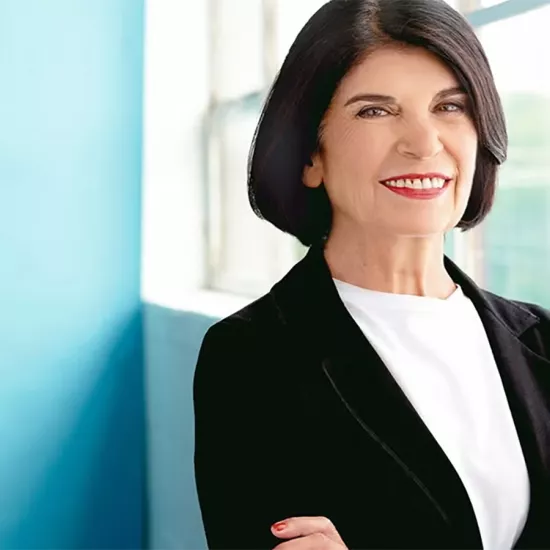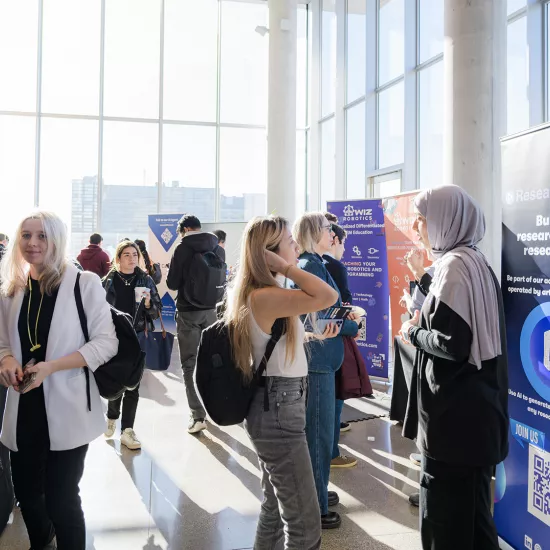New course on Indigenous feminisms coming to UTM’s teaching lodge
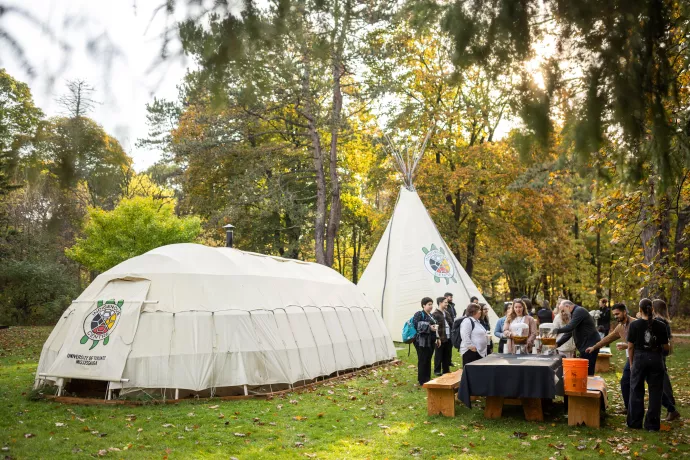
It’s a bit of a walk from the centre of the University of Toronto Mississauga campus to the Indigenous teaching lodge, which sits in a quiet spot among the trees off Principal’s Road. The short excursion into nature will be an integral part of the student experience in Maria Hupfield’s new winter session course, the first at UTM to take place predominantly in the teaching lodge.
“This small journey will start the process of moving students away from their usual way of thinking,” says Hupfield, an assistant professor cross-appointed to UTM’s English and visual studies departments. “Then, once they get into the lodge, it defamiliarizes them because they’re not in the usual lecture hall or seminar room. It opens up how they respond to the teaching and how they approach the content.”
The third-year English course “Indigenous Feminisms” will rely on traditional and innovative Indigenous texts, media and performances. Whenever possible, classes will be in the teaching lodge, which has a wood stove and has hosted numerous events including workshops, conferences and guest speakers since it was erected in September 2023. Classes requiring advanced digital technology will move to the Multimedia (MIST) Studio Theatre. Other faculty members have occasionally held classes – but not full courses – in the UTM teaching lodge, or in the teaching lodge at New College on the St. George campus.
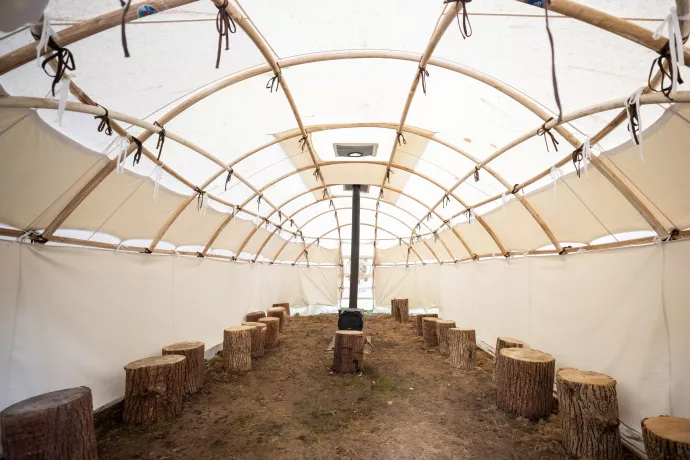
“Native pedagogy is about doing and experiencing,” says Hupfield, the Canada Research Chair in Transdisciplinary Indigenous Art. “I find that it’s not until students are outside on the land and in Indigenous spaces that they really understand the teachings.”
Hupfield identifies as an off-reservation urban Anishinaabe who belongs to the Wasauksing First Nation. She grew up in Port Perry, Ont., with parents who met at art school but never had a chance to pursue their passion.
“This is part of the reason why I chose to be an artist,” she says. “Also, I was surrounded by creative people growing up. My parents, but also my aunties and other friends, were always making things. It felt natural for me to do that too.”
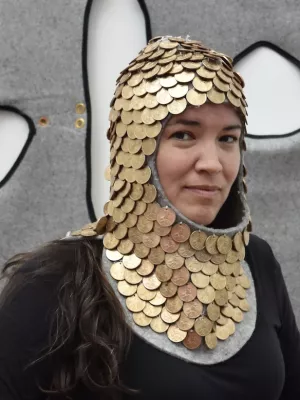
She chose UTM for her undergraduate studies both for its natural beauty and for the opportunity to combine an Art & Art History degree with a minor in Aboriginal Studies – which was somewhat unusual in the late 1990s.
“I became very interested in working at the intersection of Anishinaabe cultural knowledge and Western-based art practices,” she says.
“The program made room for me to do that.”
While she was still a UTM student, Hupfield mounted her own exhibits and launched multiple arts-based partnerships with local Indigenous arts and social services organizations.
Since then, she’s become an internationally respected artist with major solo exhibitions, multiple prestigious awards and exhibitions at prominent galleries across North America.
This fall, Hupfield is presenting an original commission at the Toronto Biennial of Art. “To be chosen is a huge recognition,” she says. “It’s a really powerful moment in my art practice.” Earlier this year, she contributed to the first Native Fashion Week in the U.S. “This is what transdisciplinary Indigenous art means to me: working across design, visual art, video, traditional sculpture – everything.”
As the director and lead artist at UTM’s new Indigenous Creation Studio, Hupfield and her colleagues and students explore all these media. Her current research, conducted in collaboration with Indigenous communities, is bringing new life to Indigenous art objects. She and her team are creating a digital archive that presents each piece in novels ways, such as through storytelling, video or 3D rendering. At the Daniels Faculty of Architecture, Landscape and Design, she leads a seminar series for graduate students.
When Hupfield returned to UTM as a professor in 2019, she experienced firsthand the increased presence of – and institutional support for – Indigenous students and faculty compared with when she graduated in 1999.
“Even in the last few years, enrolment in my Introduction to Indigenous Art class has almost doubled,” Hupfield says.
U of T’s Truth and Reconciliation Steering Committee Report released the “Answering the Call – Wecheehetowin” report in 2017, notes Tee Duke, director for UTM’s Office of Indigenous Initiatives. “The report called for the expansion of Indigenous curriculum and cocurricular education along with the hiring of Indigenous faculty and expanded Indigenous spaces on our three campuses,” says Duke. “It’s an important development to have a course on Indigenous Feminisms taught in UTM’s own teaching lodge.”
“We’re thrilled to be able to offer this experiential, land-based course, led by interdisplinary scholar Professor Hupfield,” says UTM’s English & Drama Associate Chair Terry F. Robinson. She adds that the course ties back to UTM’s strategic framework – namely, its central values of truth, openness, and reciprocity.
Hupfield’s winter course in the teaching lodge is already full. “I love that there’s interest,” she says. “It’s beautiful. More courses like this, held in Indigenous spaces and rooted in experiential learning, will attract more Indigenous students. We need to continue to support Indigenous research and teaching, and focus on retaining Indigenous faculty. But so much is happening here right now and I’m happy to be part of it.”


